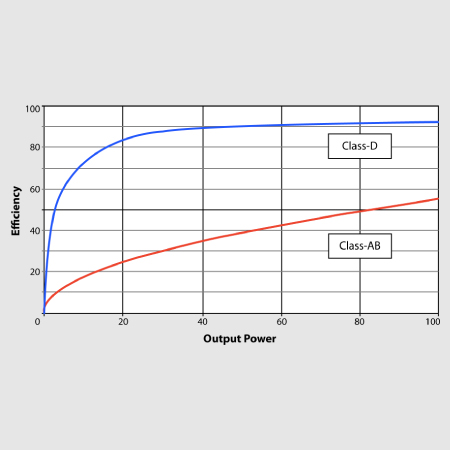class ab vs class d power consumption
The efficiency of Class C amplifier is much more than the A B and AB. As high power conditions arise the system dynamically increases rail voltage ie.
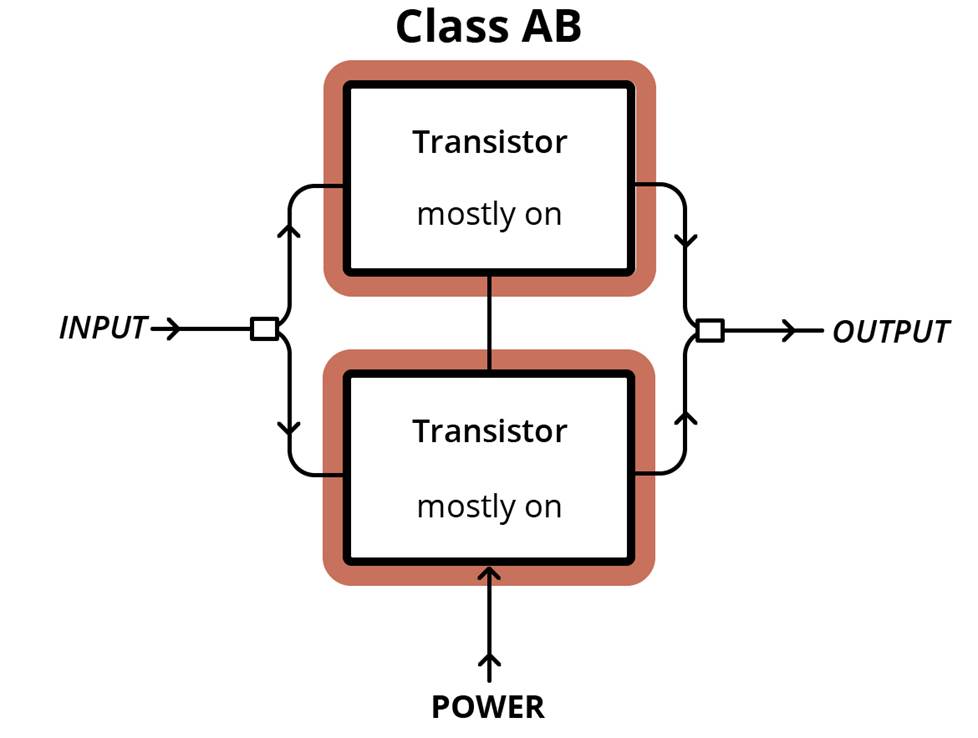
Which Amplifier Class Is The Best How Class D Amplifier Technology Differs From Class A And Ab
In fact class AB is more of a niche field at this point.

. Both are depicted in figures 5 and 6. So I feel Class AB still seems to make the most sense. Class AB Efficiency 2 AN-1497Filterless Class D.
How much power would I save driving 9 channels at 10 W each. If I come across a Class D amp with a good damping factor Id be happy to try it out. The main drawback of class A amps is their ineffectiveness - they have a theoretical efficiency limit of only 50.
In either case under low demand conditions the system utilizes a lower rail voltage than a comparably rated Class AB amplifier significantly reducing power consumption. Class D Audio Amplifiers. The problem with class A is it uses a huge amount of power compared to other types so you will not see anything larger than 50-100 watt output amps.
Class D amplifiers are very efficient around 90 and are actually very good. Class G Amplifier Class G offers enhancements to the basic class AB amplifier design. Theoretically the maximum efficiency for a Class D amplifier is 100.
Comparing AB to D is difficult because there are several designs and several different grades of parts used. Class D amps are digital. Class A conducts all the time because it is biased so.
Class D is efficient and therefore cheaper yet marketing has pushed class D as. They use a series of pulses to generate the music which is then put through a lowpass filter to make it sound like music again. Figure 2 shows the theoretical operating time of an 800mAh lithium-ion battery powering a LM4673 and a comparable Class AB amplifier.
Class D amplifiers are suited for audio applications and are several orders of magnitude more efficient than traditional linear amplifiers. Put a good class D and Class AB beside each other with a proper setup and you will not be able to tell the difference. Compared to an equivalent class-AB device a class-D amplifiers lower losses permit the use of a smaller heat sink for the MOSFETs while also reducing the amount of input power required allowing for a lower-capacity power supply design.
Less power consumption and lower heat generation. Lets say the maximum drive power of both amps is 100 watts per channel. I have no problem at all with G or H because those are just Class AB with multiple rails.
The bonus is efficiency. It doesnt take a lot to hear the difference between class AB and class D the two more common amplifier classes available - and the two in question. High efficiencygreater than 90.
Joined Jun 1 2020 Messages 2002 Likes 2801 Location Dorset England. Pretty much anything that makes sound a class D amp is used to drive whatever transducer. This constant switching reduces the average power consumption and therefore power loss caused by wasted heat.
When you compare the old one with the new the old ones are more musical and even have a better 3 Dimensional stage. Just remember to turn on your amp last. I believe i remember reading somewhere that efficient class ab amps are around 60 efficient at full output and efficient class ds are around 80-84 at full output.
Then positive peak is 05035085mA negative peak is 05-035015mA but in all of those cases current is greater than zero. Now I know class AB is less efficient so its natural that my TNTs power consumption states 500W for producing 150W output 30 efficiency or for the case my Hartke 3500 head draining 740W from the power outlet to produce its 350W rated power output little under 50 efficiency. Very high-power potential 400 to 500 W in a small package.
Level the increased power consumption shortens the life of an 800mAh single cell lithium-ionbattery by 197 minutes well over three hours. 0125100 125 watts 80 eff 156 watts x 7 1094 watts. They went from class AB to D.
Maximum 80 efficiency can be achieved in radio frequency related operations. Class AB vs Class D. A Class D topology would look like this.
Class D Half-Bridge Topology 4. Vini darko Major Contributor. While a regular class AB amp might be 30-50 efficient a Class D amp will be 80-90 efficient - that is how much of the wall juice actually turns into music.
2020-07-20 1254 am. Class G uses multiple power supply rails of various voltages and automatically switches between these supply rails as the input signal changes. So is there a difference between these AB Class D power ratings and if there is how to decide on which amp to buy.
For example your idle current is 05mA and peak is 035mA from idle. Class C amplifier is tuned amplifier which works in two different operating modes tuned or untuned. The power consumption scales with signals.
This article suggests class D at practical levels has about an order of magnitude lower power consumption than class B and class A is more than an order of magnitude worse than class B. Jul 6 2020 2 Should be fine using high power class D. Class A you can tell the difference between other types but it still isnt much.
In both cases power output is clearly stated RMS. What Why and How. 0125 100 125 watts 20 eff 625 watts x 7 4375 watts.
I do believe that the difference is much larger when the amps arent running at full capacity which is all the time unless you like to listen to test tones. A Class D power supply is fine though. It should at least be in the 50 to 100 range.
The Pioneer receivers in class D sound like shit. The high power efficiency of Class D amplifiers translates into less power consumption for a given output power but more importantly it reduces heatsink requirements drastically. Another advantage of the class-D amplifier is.
Class D amplifiers are the best choice when it comes to power dissipation consideration because there is far less loss in power consumption when the MOSFETs are not always in the on state. Joined Oct 10 2011. In other words they need to consume a lot of power and dissipate it as heat in order to generate useful signal.
Answer 1 of 5. Class C amplifier uses less than 180-degree conduction angle. But class D is great for subwoofer amps and even in some amp it can be good.
Therefore class-D amplifiers are typically smaller than an equivalent class-AB amplifier. Switches to the high voltage rail to handle high amplitude transients. If we were to compare two 100 wattch 7ch amplifiers driven at 18th power 125 the power consumption differences between a Class AB vs.
Like the title says can someone give me an estimate of how much power a class AB amplifier and class D amplifier would use to drive 9 channels at 10 watts each. Pass class AB amps sounds great in class A and B. So far we only mentioned biasing current but.

Amplifier Classes And The Classification Of Amplifiers
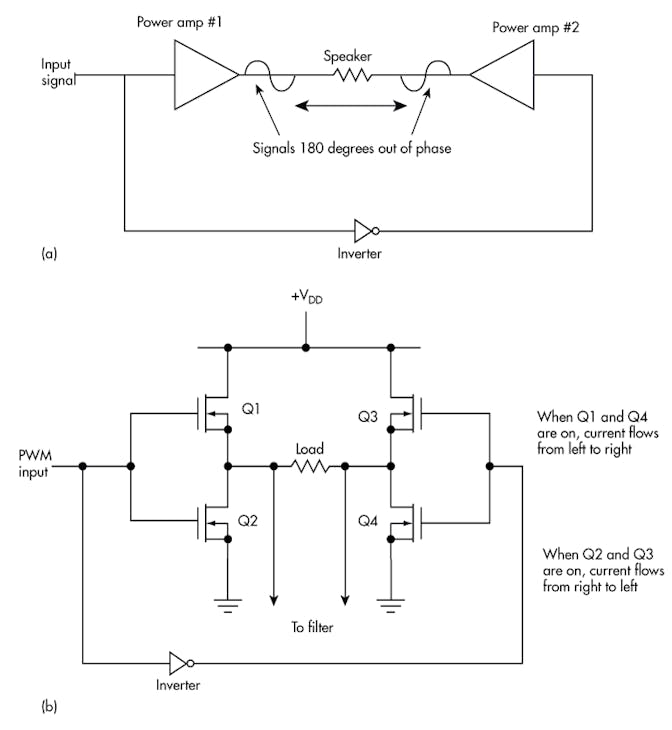
Transitioning From Class Ab To Class D In Automotive Audio Systems Electronic Design
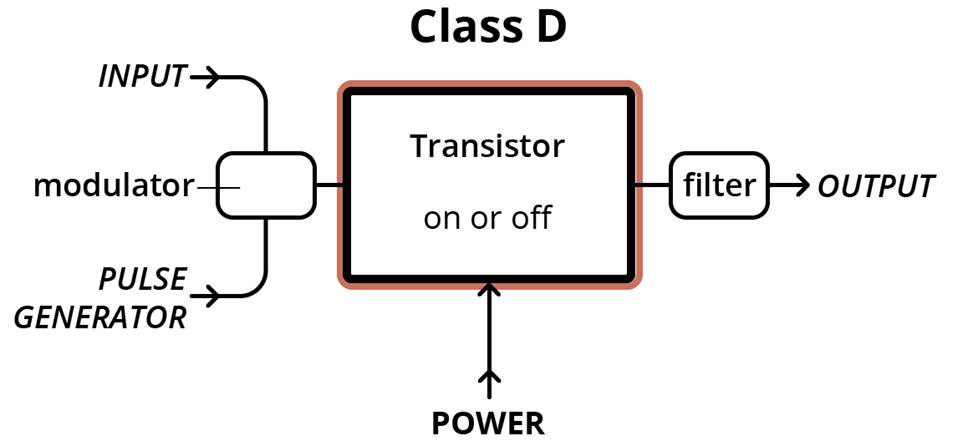
Which Amplifier Class Is The Best How Class D Amplifier Technology Differs From Class A And Ab

Class Ab Amplifier Design And Class Ab Biasing

Fundamentals Of Class D Amplifiers Maxim Integrated
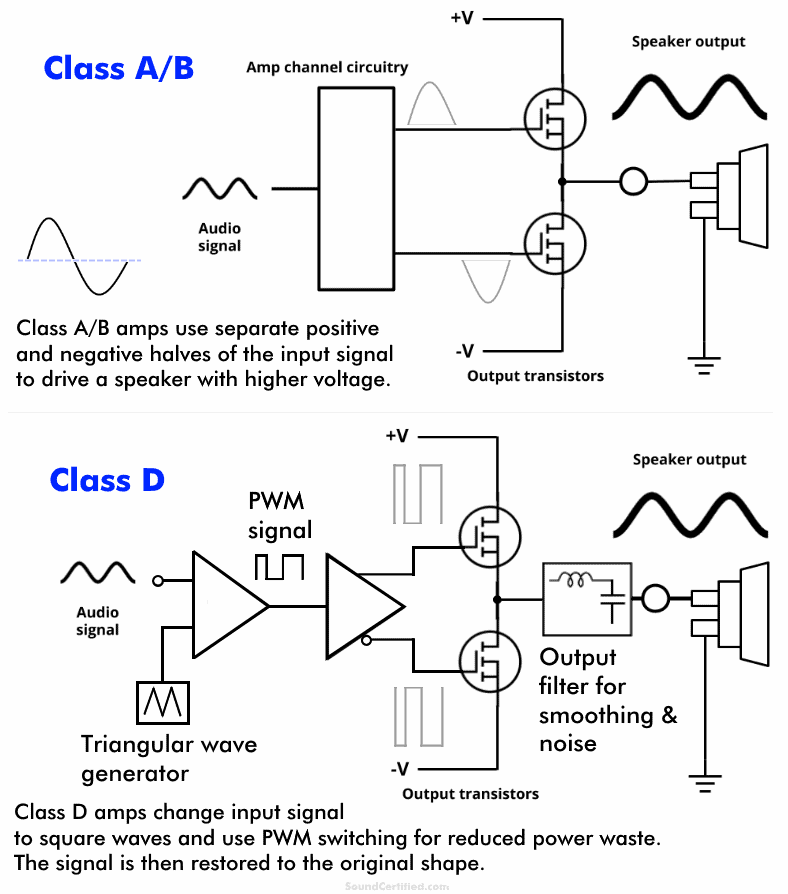
What Does A Car Amplifier Do The Only Guide You Need

Class D Power Amplifier Power Electronics News

Amplifier Classes And The Classification Of Amplifiers

Classes Of Power Amplifiers Class A B Ab C D Amplifiers Explained

Class D Audio Amplifiers What Why And How Analog Devices

What Are The Different Types Of Audio Amplifier Classes Audioholics

What Are The Different Types Of Audio Amplifier Classes Audioholics

Class D Audio Amplifiers What Why And How Analog Devices

Class D Audio Amplifiers What Why And How Analog Devices

Class D Power Amplifier Power Electronics News
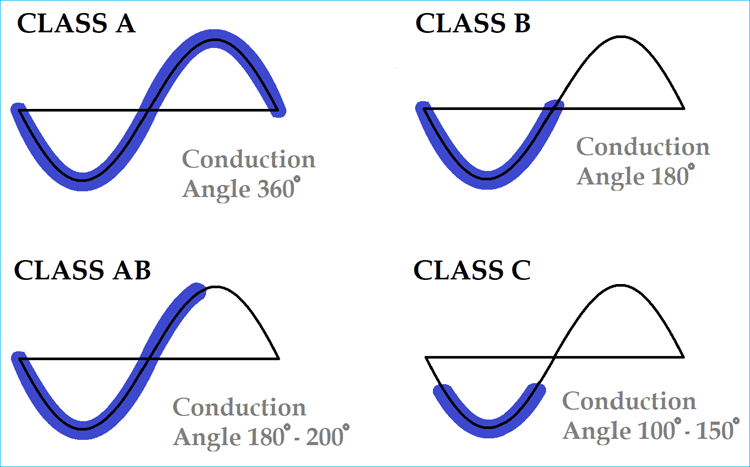
Classes Of Power Amplifiers Class A B Ab C D Amplifiers Explained

